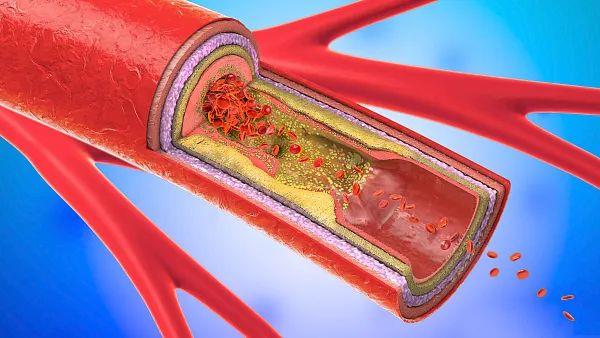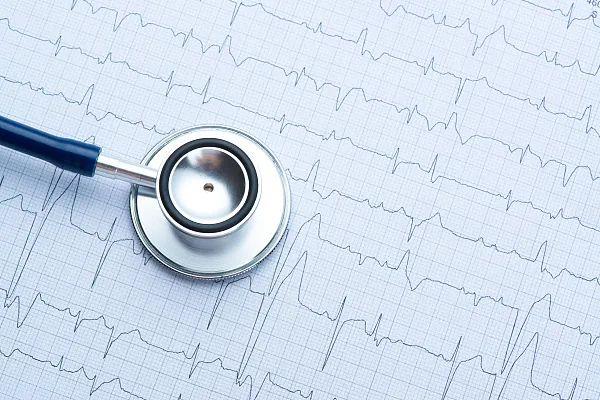Go and have a physical examination
Found that the inspection report indicators are not within the normal range.
Even some "words" make people feel uneasy
In fact, some may not be sick, so don’t panic!
01 Carotid Atherosclerosis Plaque: No special treatment is needed if carotid stenosis is not formed.
The physical examination report shows "carotid atherosclerotic plaque", and many people are very scared, worrying whether it will endanger their health if they ignore it.
Hypertension, hyperlipidemia, diabetes, smoking, excessive drinking and less exercise are all risk factors for carotid plaque formation. In addition, carotid plaque may appear with age, even without the above risk factors.
At this time, it is particularly important to have a healthy eating habit with less oil and salt and proper physical exercise. Of course, it is also very important to treat patients with hyperlipidemia and control various risk factors.

Prostate calcification: no negative effect on the body.
Many people will feel panic when they see "prostate calcification" on the physical examination report, and they don’t know how to treat it. In fact, "prostatic calcification" is a scar left over from prostatitis after rehabilitation, which has no negative impact on the body and does not require excessive anxiety and treatment.
Occasional premature beats and sinus arrhythmia: no need to be overly nervous.
In the process of heart examination, if you find the following problems, don’t be overly nervous and try not to overtreatment.
Occasional premature beats
With the increase of age, many people will have premature beats. If the dynamic electrocardiogram evaluation is accidental and there are no clear symptoms, most of them can pay attention to observation, and don’t think about applying drugs and other means.
sinus irregularity
Many people get physical examination reports showing "sinus arrhythmia", and their instinctive reaction is to doubt whether there is something wrong with their heart, but it is not. Our normal heart rhythm is called sinus rhythm. Sinus rhythm is relatively regular, but the number of heartbeats, that is, the heart rate, changes at all times. "Sinus arrhythmia" is a normal physiological phenomenon, which may be related to your mood when doing ECG at that time, such as anger, nervousness and excitement, including taking some drugs, which will affect the heart rhythm results and can be relieved after a calm rest. Children and adolescents often have sinus arrhythmia during their development, and most of them will return to normal with age without special treatment.

04 blood routine slightly exceeds the standard or decreases without symptoms: more common.
Routine examination has a normal reference value range. When the blood is tested, this item shows that it exceeds or decreases, and "↑ ↓” . The value that exceeds the standard or decreases is only a little more (less), which is called critical value in laboratory medicine.
It is very common for blood routine examination to have a critical value.Because there are many factors that affect the blood test results, such as the use time of blood pressure band, the location of blood collection, the way of preservation and the time of inspection, gender, age, race, altitude of residence, and even seasonal changes can interfere with the parameters.
At the same time, abnormal biochemical indicators such as elevated fasting blood sugar, hyperlipidemia and high uric acid will also have a certain impact on the detection of blood routine, so this is why doctors will think that there is no problem if the indicators are only a little higher or lower and there are no symptoms.
However, if you do have some uncomfortable symptoms, even if the gap between the test results and the normal reference value is relatively small, it may be a hint of early illness.

Incidental increase of transaminase index: don’t worry.
Transaminase is a very sensitive indicator. Taking some drugs, drinking alcohol, staying up late or strenuous exercise will cause the transaminase to rise. After stopping taking drugs or taking a rest, transaminase can return to normal.
However, if transaminase continues to increase, it is suspected that it is a hepatobiliary disease and needs further examination.
These three types of urine routine indicators are abnormal: don’t worry.
Positive urobilinogen: drinking less water may be abnormal.
When the urine is concentrated and the urine color is dark yellow, there will be urobilinogen positive. For example, when drinking little water and urinating for the first time in the morning, the color will be darker. If bilirubin is positive at the same time, it is necessary to check the bilirubin level in the blood to rule out hepatobiliary and pancreatic diseases.
High/low urine specific gravity: insufficient or excessive drinking water may be abnormal.
The specific gravity of urine reflects the concentration of urine. When sweating a lot and drinking water is insufficient, the proportion of urine may be greater than normal, that is, false positive; On the contrary, after drinking a lot of water, the urine is diluted, and the diaper may be lower than the normal value, resulting in false negative.
Urine ketone body positive: Hunger may lead to abnormality.
Ketosome is the product of fat catabolism, which should be negative in urine normally and positive in urine of diabetic ketoacidosis patients. However, if there is no urine sugar positive, thin body, and no food before physical examination, hunger may also lead to urine ketone body positive.

Calcified nodules in the lungs: generally no treatment is needed.
In the CT report, pulmonary nodule-like calcified foci, calcified nodules, old proliferating foci, etc. are all scars left after disease recovery, most of which are caused by previous tuberculosis or lung infection.It does not affect lung function, nor does it cause cancer, and generally does not need any treatment.
Physiological hyperplasia of mammary glands: generally, it can be resolved by itself with the patient’s self-regulation.
In the physical examination, many women will have the problem of "mammary gland hyperplasia". Clinical breast hyperplasia is mostly biological breast hyperplasia. Physiological hyperplasia of mammary glands is mainly related to endocrine disorder and bad mood, and the breast will have periodic breast pain with menstrual cycle.Without treatment.
Only part of pathological breast hyperplasia may become malignant (a small part of breast hyperplasia is associated with breast cancer, but the proportion is probably less than 5%). )
Develop breast self-examination and pay attention to the following two symptoms:
① After menstruation, breast pain did not decrease, and even the pain became heavier and heavier.
② The chest can be touched with persistent small pieces, which do not disappear after menstruation and become harder and harder. At this time, you should seek medical attention in time.
This kind of cyst: basically does not need special treatment.
Cyst is a benign mass, some single, but also multiple, generally speaking, it has little impact on health, and it is not necessary to be too nervous to find out.As long as the cyst does not cause compression symptoms, organ dysfunction or inflammation and infection to the surrounding organs, there is basically no need for special treatment.If the cyst of liver and kidney is too large, it may oppress adjacent organs and cause discomfort, so it needs active treatment. If there are complications, such as cyst rupture, intracapsular bleeding, etc., surgical treatment is needed.
Many people find out "liver cyst" through physical examination, and feel particularly scared. In fact, liver cysts are mostly congenital, with a low incidence rate and will not affect liver function.As long as the cyst does not exceed 5cm and does not cause physical discomfort or some clinical symptoms,You don’t need drugs or surgery. Just follow up regularly and observe its size change.
Cervical cysts are mostly benign,Most of them are caused by chronic inflammation, and the probability of canceration is very low. Generally, there is no need for treatment, so regular review is enough.
10 Non-inflamed Bone Spurs: Ignore them.
Bone spur is actually a protective reaction of the body, that is, in the process of aging, the local bones are stimulated unevenly because of uneven stress, which leads to the occurrence of bone spur.As long as it is not inflamed, the bone spur is actually a protective device for the body, and it can be completely ignored at this time.
Even if you have bone spurs, you should try to delay the aging of joints. To reduce harmful actions, there is a nine-character principle, that is, to be active, to use sparingly, and not to be brave. Don’t deliberately climb mountains and stairs to challenge yourself.
However, if the body cartilage is destroyed under some external force, cold or local inflammatory stimulation, some bone spurs may hurt. At this time, you must see a doctor in time and let the doctor handle it.
Thyroid nodules (mostly) found by ultrasound: benign.
In recent years, the number of thyroid nodules found in physical examination has increased year by year, especially in women than men, and there is a trend of increasing with age.
Most thyroid nodule are benign,And generally have no obvious physical symptoms. If a thyroid nodule is found, the description isSolidity, microcalcification, extremely low echo and blurred edge need to be paid attention to.Need to see a doctor in time according to the doctor’s advice.

These "diseases" should not be over-treated.
Carotid atherosclerotic plaque: If carotid stenosis is not formed, it can be reviewed regularly without special treatment;
Prostate calcification: no negative effects on the body, no need for excessive anxiety and treatment;
Arrhythmia and premature beats: occasional premature beats and sinus arrhythmia need not be overly nervous;
The blood routine is slightly over-standard or reduced, and there are no symptoms, which is very common;
Physiological hyperplasia of mammary glands: generally, it can be resolved by itself with the patient’s self-regulation;
Most cysts, and no compression or inflammation: basically do not need special treatment;
Accidental increase of transaminase index: don’t worry too much;
Three types of urine routine indicators are abnormal: don’t worry too much;
Calcified nodules in the lungs: generally no treatment is needed;
Non-inflammatory spurs: you can ignore them;
Ultrasonic findings of thyroid nodules (mostly): benign. (CCTV life circle)
关于作者